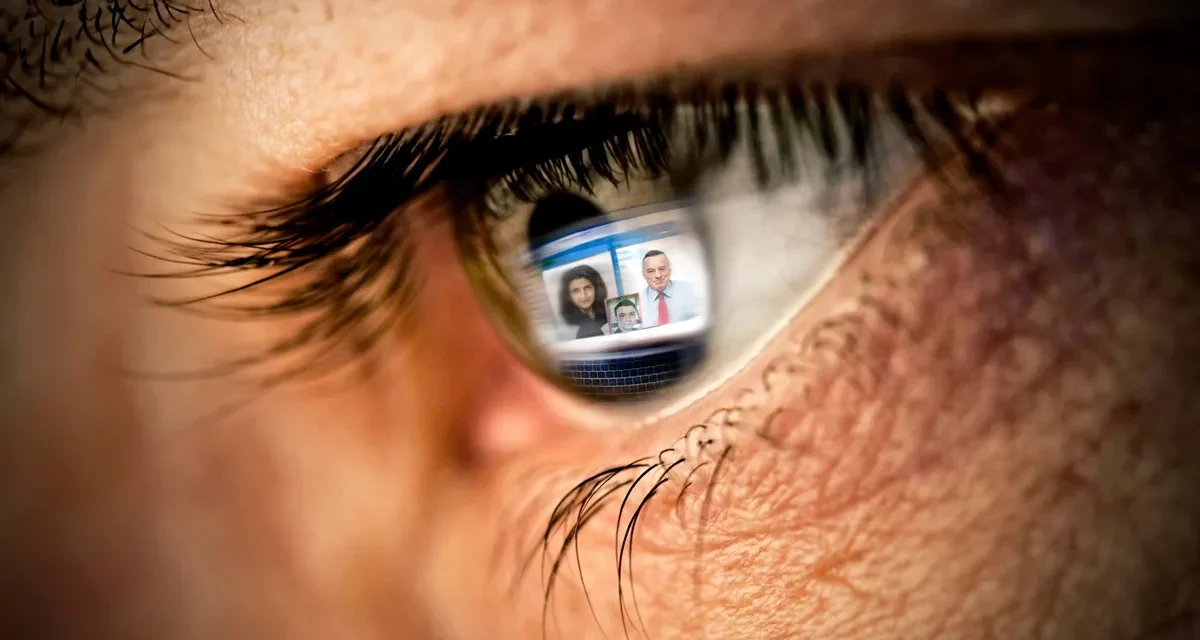Everyone has had the experience. Four inches away from your computer, TV, or phone, you wait in terror or excitement for the next episode of your favorite show to air. While you wonder what will happen to your favorite characters, you should also consider whether or not spending too much time in front of a screen could cause long-term damage to your eyes.
In the current digital era, displays play a crucial role in our everyday activities. We are inundated with screen time all the time, from computers and televisions to cellphones and tablets. Even while technology has numerous advantages, prolonged screen time can be quite harmful to our vision. This article explores the detrimental effects of prolonged screen usage on eye health and offers doable solutions to reduce and manage these risks.
Screen Time’s Effect on Eyesight
Digital Eye Strain:
Also referred to as computer vision syndrome, digital eye strain is one of the most noticeable side effects of extended screen time. Dry eyes, headaches, impaired vision, and soreness in the neck and shoulders are some of the symptoms. These symptoms appear as a result of the decreased blink rate caused by prolonged screen staring, which causes dryness and discomfort.
Exposure to Blue Light:
Blue light from screens can go deep into the eye and has been connected to retinal damage. Age-related macular degeneration (AMD), the most common cause of vision loss in older persons, can be accelerated by prolonged exposure to blue light.
Nearsightedness/Myopia:
Prolonged use of screens, particularly throughout early life, is linked to a higher likelihood of developing myopia. According to studies, youngsters who engage in close-up activities, such as using screens, for extended periods of time are more likely to become nearsighted.
Disrupted Sleep Patterns:
The hormone melatonin, which controls sleep, is produced less frequently when exposed to blue light from screens. This disturbance may result in low-quality sleep, which subsequently impacts general eye health and raises the possibility of long-term eye disorders.
Controlling Screen Time to Improve Eye Health
Observe the 20-20-20 Rule:
This will help you avoid digital eye strain. Take a 20-second break every 20 minutes to look at anything 20 feet away. This lessens weariness and aids in relaxing the eye muscles.
Modify the Display Settings:
Make sure the brightness and contrast on your screen are at a comfortable level. To reduce glare, use screen covers or anti-glare displays. To make reading simpler, adjust the text size and contrast. You should also keep screens an arm’s length away from your eyes.
Simplify Your Workspace:
Good ergonomics might help to minimize eye strain. Make sure the top of your screen is at or slightly below eye level. To lessen glare and reflections on your screen, make sure your desk has enough illumination.
Make Use of Blue Light Filters:
A lot of gadgets have “night mode” or built-in blue light filters that cut down on blue light emissions. In particular, if you spend a lot of time in the evenings in front of a screen, think about investing in blue light-blocking glasses.
Make More Blinks:
Blinking more frequently on purpose can help keep your eyes moisturised and less dry. If your eyes stay dry all the time, think about using artificial tears.
Take Regular Breaks:
Make sure to schedule regular pauses during your screen time. To allow your body and eyes to rest and heal, get up, stretch, and walk about.
Schedule Frequent Eye Exams:
Maintaining eye health requires routine eye exams. An eye care specialist can identify any vision issues early on and suggest the best course of action to keep your eyes safe.
Enhancing Children’s Eye Health
The negative effects of excessive screen time are especially dangerous for children. To assist preserve their vision, consider the following advice:
Screen Time Limit:
Limit the amount of time kids spend using screens in a sensible manner. Promote hobbies and outdoor pursuits that don’t require screens.
Establish Areas Without Screens:
Designate specific sections of the house—like the dining room and bedrooms—where using screens is prohibited. This encourages better habits and helps cut down on screen time overall.
Promote Frequent Rest Periods:
Instruct them to observe the 20-20-20 rule and to put down their screens on occasion. Offer substitute tasks that facilitate eye rest and sharpening of focus.
Educate Children on Appropriate Screen Use:
Make sure kids know how important it is to use screens appropriately, which includes keeping a safe distance away from them and adjusting the settings to be as comfortable as possible.
Watch and Take Example of Behavior:
Observe how much time your kids spend on screens and lead by example by controlling your own usage. To promote healthy habits, encourage family activities that don’t include screens.
To conclude, screens are an inevitable aspect of modern life, but we must be aware of how they affect our vision. We can safeguard our eyesight and preserve excellent eye health by being aware of the hazards and putting procedures in place to control screen time. In the digital world, remember that your eyes are a valuable asset and take care of them.
While certain TV series are timeless, your eyes are not as resilient. It’s crucial that you schedule routine eye checkups with an eye doctor at least once a year, and more frequently if you exhibit any of these warning indicators of vision problems.
BY: APPIANIMAA MERCY





